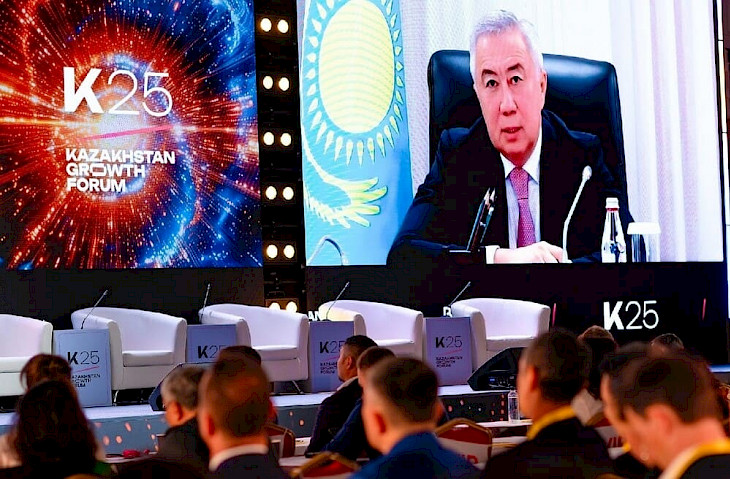Almaty hosted the Kazakhstan Growth Forum K25, bringing together more than 500 entrepreneurs, top managers, and executives from the country’s largest companies. Deputy Prime Minister and Minister of National Economy Serik Zhumangarin delivered a keynote address to the participants via online format, the press service of the Government of Kazakhstan reported.
The central theme of the 2025 forum was Customer-Centric Kazakhstan — a new wave of industrialization built around the needs of the client. In his remarks, Zhumangarin stressed that the current year marks a turning point for the national economy: the share of the oil sector in GDP is steadily declining, while manufacturing continues to gain ground. By the end of 2024, the oil sector’s contribution fell to 8.1% of GDP, whereas manufacturing rose to 12.4%.
According to the deputy prime minister, 2025 is a crucial stage in redefining sources of economic growth. The government is closely monitoring 17 major projects worth a total of around $27 billion, including petrochemicals, agricultural processing, and machine building. Among them are new automotive plants scheduled to begin operations soon in Kostanay and Almaty. In parallel, the National Infrastructure Plan through 2029 is being implemented, with an overall budget of about $80 billion.
Zhumangarin devoted special attention to the recapitalization of the national development institution Baiterek, launched this year. “We are allocating 1 trillion tenge to Baiterek, which allows us to attract an additional 7 trillion, including 4 trillion in foreign currency resources to support export-oriented industries. As a result, $15 billion worth of real sector projects will be financed in 2025, ensuring an additional 1.3% growth of GDP — a worthy alternative to oil,” he emphasized.
Transport infrastructure remains a key driver of growth, the minister underlined. In 2025, 13,100 km of highways and 4,000 km of railways will be constructed or repaired. The Dostyk–Moyynty section is nearing completion, while construction of the Moyynty–Kyzyljar line will begin in 2026. Another project, Beineu–Saksau, will strengthen the capacity of the Middle Corridor, already backed by over 800 billion tenge in financing from the EBRD and World Bank.
At the same time, Zhumangarin noted that road maintenance requires a revised approach, as many highways are not commercially viable and government guarantees often turn into direct obligations. A new package of proposals is being developed to introduce maintenance mechanisms comparable to railway standards, which is expected to accelerate infrastructure development.
The deputy prime minister also emphasized Kazakhstan’s growing transit potential. In 2025, rail cargo volumes along the Trans-Caspian International Transport Route are projected to exceed 4.5 million tons, with future growth to 7–10 million. To expand regional connectivity, Kazakhstan signed a memorandum with Afghanistan on constructing the Turgundi–Herat railway, which will form part of the broader CASA (Central Asia–South Asia) corridor, linking Kazakhstan with markets through Turkmenistan, Afghanistan, and Pakistan.
According to Zhumangarin, the implementation of these projects over the next 5–10 years is vital for ensuring Kazakhstan’s sustainable access to new export markets and creating the foundation for stable economic growth under conditions of diversification.
CentralasianLight.org
September 27, 2025

